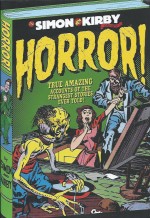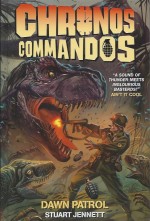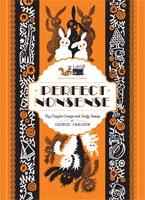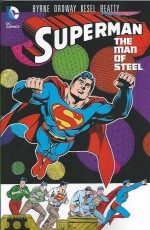
By Brian Michael Bendis, Steve McNiven, Mark Morales & various (Marvel)
ISBN: 978-0-7851-1672-1
During Marvel’s rebirth in the early 1960’s Stan Lee & Jack Kirby took their lead from a small but growing band of costumed characters debuting or reviving at the Distinguished Competition.
Julie Schwartz’ retooling of DC Comics’ Golden Age mystery-men had paid big dividends for the industry leader in recent years, and Editor Lee’s boss (publisher Martin Goodman) insisted that his company should get in on the act too.
Although National/DC had achieved incredible success with revised and updated versions of the company’s old stable, the natural gambit of trying the same revivification process on characters that had dominated Timely/Atlas in those halcyon days didn’t go quite so well.
The Justice League of America-inspired Fantastic Four featured a new Human Torch but his subsequent solo series began to founder almost as soon as Kirby stopped drawing it. Sub-Mariner was back too, but as a villain, as yet incapable of carrying his own title…
So a procession of new costumed heroes began, with Lee, Kirby and Steve Ditko churning out numerous inventive and inspired “super-charactersâ€.
Not all caught on: The Hulk folded after six issues and even Spider-Man would have failed if writer/editor Lee hadn’t really, really pushed his uncle, the publisher…
Even so, after nearly 18 months during which the fledgling House of Ideas had created a small stable of leading men (but only a sidekick woman), Lee & Kirby finally had enough players to stock an “all-star†group – a format which had made the JLA a commercial winner – and assembled a handful of them into a force for justice and even higher sales…
Cover-dated September 1963, The Avengers #1 launched as part of an expansion programme which also included Sgt. Fury and his Howling Commandos and The X-Men and, despite a few rocky patches, the series soon grew into one of the company’s perennial top sellers.
However times and tastes always change and after four decades, during the latter part of 2004, the “World’s Mightiest Heroes†were shut down and rebooted in a highly publicised event known as Avengers Disassembled.
Of course it was only to replace them with both The New and The Young Avengers. Affiliated comic-books Thor, Iron Man, Spectacular Spider-Man, Captain America, and Fantastic Four ran parallel, quasi-interconnected story-arcs to accompany the Big Show.
The entire tale revealed the worst day in the team’s history as staunch Avenging veteran the Scarlet Witch was discovered to have gone crazy, attacking the team who had been her family and causing the destruction of everything they held dear.
With several members dead, Captain America and Iron Man disbanded the team and turned out the lights.
The most important development from that epic ending was The New Avengers, and this second collection gathers issues #7-10 from that celebrated revamp (covering July to September 2005) with additional fact pages culled from New Avengers: Most Wanted Handbook as scripter Brian Michael Bendis, with artists Steve McNiven & Mark Morales, further redefined the nature of group heroics for a darker, more complex century.
Following an orchestrated breakout of a lethal legion of super-villains from floating ultra penitentiary The Raft, Captain America had convinced metahuman first responders Luke Cage, S.H.I.E.L.D. agent Jessica (Spider-Woman) Drew, Spider-Man and Iron Man to join a new iteration of Avengers. On the Raft they had been assisted by Matt Murdock, (recently “outed†as Daredevil by the media) and a mystery prisoner named Bob Reynolds who nobody seemed to know anything about…
Reynolds or Sentry – the most powerful being on Earth – had in fact volunteered to be incarcerated for the murder of his own wife… who was still alive…
Tentatively united, the team – sans Bob who had vanished – rocketed to the Antarctic Savage Land (a sub-surface wonderland of cavemen, dinosaurs and even stranger things, left in splendid isolation as a UN Protectorate) to recapture Karl Lykos, who fed on mutant energy to become reptilian monster Sauron. Apparently he was the actual target of the orchestrated breakout…
The impromptu mission was an unmitigated disaster with the disparate champions marooned, mauled by dinosaurs and captured by mutant mega-genius Brainchild and his Mutates.
Lykos’ escape had been engineered by the evil experimenter, who considered humans as guinea pigs and wanted to eradicate them all. Happily the neo-Avengers’ mission overlapped with the intentions of Wolverine, who had independently resolved to end the threat of Sauron forever, no matter who got in the way…
Uneasy allies, the heroes then discovered that an apparently rogue faction of S.H.I.E.L.D. had enslaved indigenous peoples of the region, using them to mine the miracle element Vibranium.
There were even scarier discoveries to come. The mass-escape had exposed the fact that many of the criminals held on the Raft had been officially dead for years and Cap’s new recruits had to face the prospect that the Free World’s greatest peacekeeping force might be partly – or even completely – corrupt. After all they were demonstrably stockpiling super-weapons, exotic elements and even metahumans for what could not possibly be any good reason…
Volume two opens with part one of 4-chapter saga ‘The Sentry’ as Tony Stark begins a report to fellow over-achieving, high-minded individuals Reed Richards, Charles Xavier, Prince Namor, Doctor Strange and Black Bolt (later revealed as elitist heroic clandestine cabal The Illuminati) about the reformation of the Avengers and the menace of the 46 still-at-large Raft escapees. Eventually the discussion turns to the potentially world-shattering mystery of Bob Reynolds…
On Long Island, Stark’s new comrades Spider-Woman, Cage, Spider-Man and Wolverine are trying to arrest Asgardian-powered street-thug The Wrecker, whilst under the Nevada Desert Director Maria Hill leads a S.H.I.E.L.D. team trying to re-arrest the despondent, semi-catatonic Sentry who never returned after helping to quell the breakout.
She is unhappy that Iron Man and Captain America have invited themselves along, but far more upset that Reynolds seems to be completely insane; terrified of some nebulous, evil other self he calls “The Voidâ€â€¦
Stark has done his homework. The only references to the Sentry on the entire planet are from some old forgotten comicbooks, so he found and brought along the writer of the pamphlets and another tangentially linked individual.
The scribe doesn’t upset the cowering powerhouse nearly as much as Lindy Reynolds, the wife Bob clearly remembers killing…
Following ‘Alien Agenda’ (an extract from an old Sentry comicbook craftily scripted by Paul Jenkins and classily rendered by Sal Buscema), the mystery in the Nevada cave deepens as, confronted with conflicting truths, Bob Reynolds vanishes in a slash of energy…
An emergency meeting of the Illuminati then dredges up a disquieting fact. Even these most puissant forces for good have never heard of Sentry, but shockingly Reed’s personal computer has. As it reels off a tidal wave of records and files it becomes apparent that the mightiest minds on Earth have all been tampered with…
Soon happy suburbanite Bob wakes up on a sunny morning to discover almost every superhero in America on his front lawn and in stunned disbelief then watches them fall to the malignant power of The Void…
The heroes have not come unprepared. The first prong of their assault is a collection of record tapes Sentry made for Mr. Fantastic, detailing how he was having periodic memory lapses where he kept forgetting who he was and suppositions about the true psychic nature of The Void.
Sadly, thanks to telepath Emma Frost, all these revelations are only occurring within his mind whilst his almighty body is occupied smashing the largest assemblage of metahuman power on Earth, but it’s all merely a preamble to Reynolds psychically curing himself…
When the breakthrough finally comes and the villains behind brainwashing Sentry and mindwiping the world are exposed, the psionic backlash instantly transforms the Avengers’ monumental and far distant New York skyscraper, creating an eerie ebony Watchtower above it in the blink of an eye…
The apparently healed hero then joins the team, but only, as Stark advises his Illuminati brethren, to keep him closely monitored…
Plot-light and blockbustingly all-action, this volume also includes the 50-page New Avengers: Most Wanted Handbook, which provides information and a list of various metahuman prisons in the MU and detailed data and threat-assessment reports by the costumed champions on the Raft fugitives they missed; specifically Armadillo, Barbarus, Blackout, Blood Brothers, Brothers Grimm, Bushwacker, Carnage, Centurious, Chemistro, Constrictor, Controller, Corruptor, Count Nefaria, Crossbones, Crossfire, Crusader, Cutthroat, Deathwatch, Dr. Demonicus, Foolkiller, Graviton, Grey Gargoyle, Griffin, Hydro-Man, Jigsaw, King Kobra, Mandrill, Mentallo, Mr. Fear, Mr. Hyde, Molecule Man, Nitro, Purple Man, Rampage, Razor-Fist, Sauron, Scarecrow, Shockwave, Silver Samurai, Slug, Tiger Shark, Typhoid Mary, U-Foes, Vermin, Wrecking Crew and Zzzaxx…
With covers-&-variants by David Finch, Steve McNiven, Neal Adams, John Romita Sr., Herb Trimpe & Sal Buscema this is a deliciously plain and simple Fights ‘n’ Tights fiesta for the devoted fanbase and another terrific jumping-on point for readers familiar with the TV animation series and movie franchises of the World’s Greatest Superheroes.
© 2005, 2006, 2011 Marvel Characters, Inc. All rights reserved.












